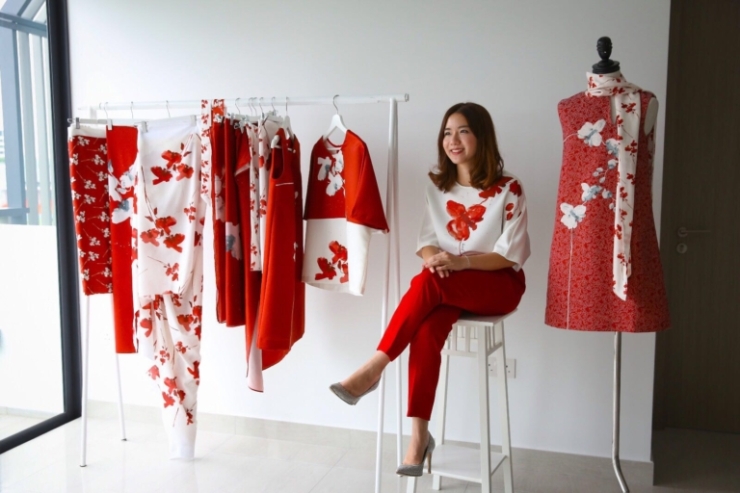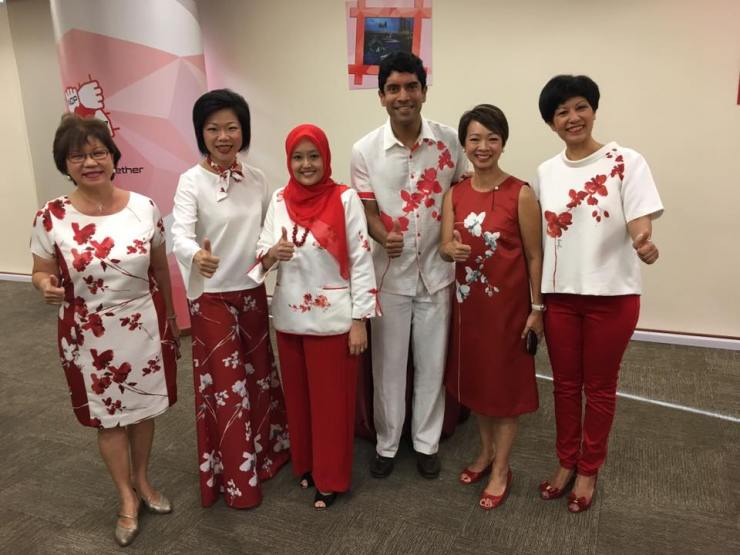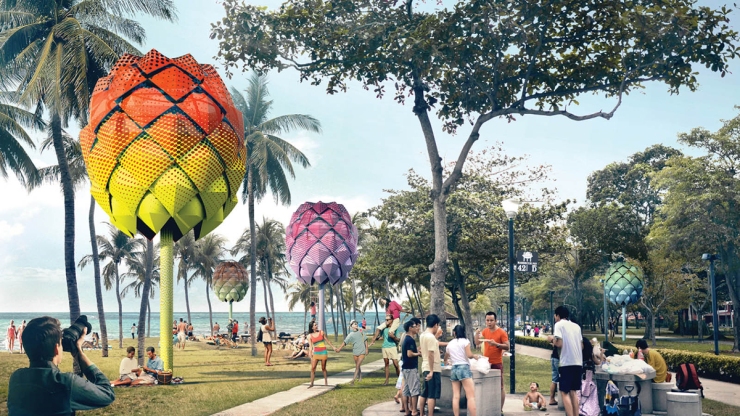Design that communicates and resonates with its audience is often shaped by the context in which it sits. How the context is used in the design also changes how an audience perceives and interprets both the visible and invisible meaning behind a design.
Chua Beng-Huat (2000) argues that Singapore in the 21st Century is the result of ‘a hybridisation of cultures in the colonised location that is far greater than a simple mixing of the two cultures’ that constitutionally endorses multi-racialism. It is a culture whose national identity is defined by many ethnic groups, and each of their cultures, histories and practices permeate the society. However, as a result of said historical colonial influence and the increasing globalisation, Chua Beng-Huat (2000) tells us that the traditional South East Asian way of life was at risk of being swallowed up by Western Capitalism. As such the government supported ‘education based on ethnic and religious cultural values’ that kick started the movement to preserve and nurture cultural identity.

An example of this is the clothing designed for politicians at the National Day Parade 2017 (shown in Figure 1 and 2).

Designed by Phauy Li Ying from Ying the Label in collaboration with some of the politicians, the National Day Capsule is a clothing collection that aims to resonate with the values of Singapore as a globalised society. As a visual communication student, I find that a design such as this should seek to embody the identity of the country as a whole, whilst evoke the values of their collective identity. This design collection spans many clothing styles that all feature the motif of ‘Vanda’ family orchids, similar to the national flower the ‘Miss Joaquim’ orchid. This orchid was chosen as it is particularly hardy and resilient which reflected Singaporean qualities (NLB n.d.). Furthermore, the orchid is a hybrid species, chosen as a reference to their cultural backgrounds, reinforced by Beng-Huat (2000) stating that ‘All resident Singaporeans are cultural hybrids’. The white and red symbolise the flag adopted following Independence but may also further reference the hybrid nature of their society. The design communicates strength and grace through the royal red that is contrasted to the fluid and soft floral patterns. This design is ultimately shaped from the rich cultural and historical contexts of Singapore’s people and communicates their pride and accomplishment as a multicultural society. It is an embodiment of Singapore’s values, which are projected to fellow citizens when worn at the National Day Parade.
As a consequence of becoming independent from Malaysia and Britain, Singapore must rely on foreign countries for resources.
Observatory of Economic Complexity – Figure 3 (External Link)
According to the UN Comtrade Database on the OEC in 2016 (see Figure 3), Singapore’s $260B imports made it the 17th largest importer in the world. This in conjunction with their ongoing environmental obligations to the Paris Agreement have geared Singapore’s economic, social and cultural policy towards sustainability.

Beach Hut (Figure 4, 2015), is a design concept that responds to this increasing concern about sustainability by proposing rentable accommodation along Singapore’s East Coast Park made out of recycled HDPE. It serves as a reminder of the unethical dumping of plastic into our oceans and educates the public about the state of our environment. In this context, the design responds to Singapore on a more global level, inferring the importance Singapore can play in cultivating environmental sustainability. The proposal is naturally ventilated and contains PV cells to support the interior fan and lighting. In this way, it also educates the importance of being frugal with energy and resources.
Overall, the way a design is shaped is by the context in which it is being designed, be it for cultural identity or for environmental awareness, the importance of researching and responding to said context is paramount. Only in doing so can a design resonate with an audience by informing, confronting and/or educating them.
References
‘Majulah shoes, Singapore-identity clothes and pining for Red Lions: What MPs got up to this NDP’, 2017, Straits Times, viewed 7 January 2018, <http://www.straitstimes.com/singapore/majulah-shoes-singapore-identity-clothes-and-pining-for-red-lions-what-mps-got-up-to-this>.
‘Seen at NDP: Ying The Label’s clothes inspired by Singapore identity’, 2017, Straits Times, viewed 7 January 2018, <http://www.straitstimes.com/lifestyle/fashion/wearing-singapores-story-on-their-sleeves>.
Ann, S. 2017, ‘While waiting backstage at #NDP17 […], Facebook post, 9 August, viewed 7 January 2018, <https://www.facebook.com/SimAnn.SG/posts/1584280741623271>.
Chua, B. 2000, ‘Postcolonial sites, global flows and fashion codes: A case-study of power cheongsams and other clothing styles in modern Singapore’, Postcolonial Studies, vol. 3, no. 3, pp. 279-292.
Koh, H. 2017, ‘Singapore toughens regulations to meet environment goals’, Eco-Business, viewed 8 January 2018, <http://www.eco-business.com/news/singapore-toughens-regulations-to-meet-environment-goals/>.
National Library Board n.d., Why is Singapore’s National Flower an Orchid?, Singapore, viewed 7 January 2018, <http://www.nlb.gov.sg/sure/why-is-singapores-national-flower-an-orchid/>.
Singapore Infopedia, 2011, Singapore-Malaysia water agreements, National Library Board, viewed 7 January 2018, <http://eresources.nlb.gov.sg/infopedia/articles/SIP_1533_2009-06-23.html>.
Spark Architects 2015, Beach Hut, viewed 8 January 2018, <http://sparkarchitects.com/portfolio_page/beach-hut/>.
Ying the Label, National Day Capsule, viewed 7 January 2018, <http://yingthelabel.com/national-day-capsule/>.
